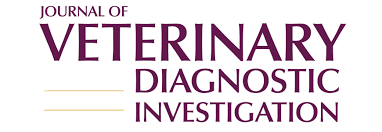Ver ítem
- xmlui.general.dspace_homeCentros e Institutos de InvestigaciónCICVyA. Centro de Investigación en Ciencias Veterinarias y AgronómicasInstituto de PatobiologíaArtículos científicosxmlui.ArtifactBrowser.ItemViewer.trail
- Inicio
- Centros e Institutos de Investigación
- CICVyA. Centro de Investigación en Ciencias Veterinarias y Agronómicas
- Instituto de Patobiología
- Artículos científicos
- Ver ítem
Necrotic Enteritis in Young Calves
Resumen
Non–enterotoxin (CPE)–producing Clostridium perfringens type A has been associated with enteritis in calves. Recent evidence has suggested that a novel toxin, named beta2 (CPB2), is implicated in the pathogenesis of this disease, although there is little evidence supporting this. In the current study, the role of C. perfringens type A in an outbreak of enteritis in calves was studied. Two 20-day-old dairy calves exhibiting apathy and reluctance to eat,
[ver mas...]
Non–enterotoxin (CPE)–producing Clostridium perfringens type A has been associated with enteritis in calves. Recent evidence has suggested that a novel toxin, named beta2 (CPB2), is implicated in the pathogenesis of this disease, although there is little evidence supporting this. In the current study, the role of C. perfringens type A in an outbreak of enteritis in calves was studied. Two 20-day-old dairy calves exhibiting apathy and reluctance to eat, with paresis of the anterior limbs, were euthanized for postmortem examination. Gross and histological changes compatible with acute enteritis, rumenitis, meningitis, and pneumonia were seen in both calves. Clostridium perfringens type A non-CPE, non-CPB2 was isolated from the abomasum and the small intestine. Escherichia coli ONT:H8 (with cdtBIII and f17 virulence genes detected by polymerase chain reaction) was also isolated from the brain, abomasum, and intestine from both calves. All the samples were negative for Salmonella spp. When the C. perfringens strain was inoculated into bovine ligated small and large intestinal loops, cell detachment, erosion, and hemorrhage of the lamina propria were observed, predominantly in the small intestine. The results suggest that non-CPE, non-CPB2 C. perfringens type A is able to induce pathologic changes in the intestine of calves, probably enhanced by other pathogens, such as some pathogenic E. coli strains.
[Cerrar]

Fuente
Journal of Veterinary Diagnostic Investigation 23 (2) : 254-259. (March 2011)
Fecha
2011-03
Editorial
Sage Publishing
ISSN
1040-6387
1943-4936
1943-4936
Formato
pdf
Tipo de documento
artículo
Palabras Claves
Derechos de acceso
Abierto
 Excepto donde se diga explicitamente, este item se publica bajo la siguiente descripción: Creative Commons Attribution-NonCommercial-ShareAlike 2.5 Unported (CC BY-NC-SA 2.5)
Excepto donde se diga explicitamente, este item se publica bajo la siguiente descripción: Creative Commons Attribution-NonCommercial-ShareAlike 2.5 Unported (CC BY-NC-SA 2.5)


